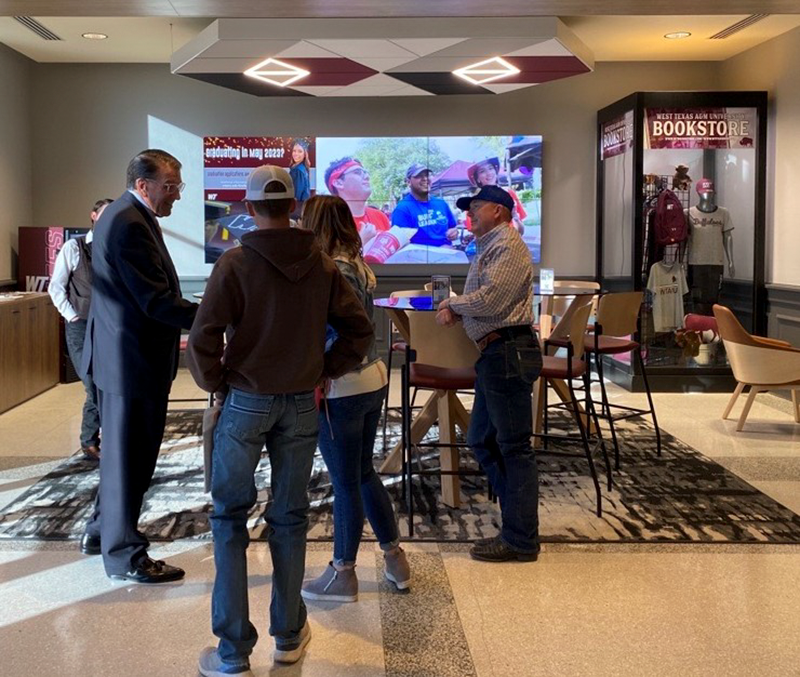
Originally written a decade ago (October 2013) but worth a second look, as the updated advice still has value. Many high school seniors are currently making important decisions about where to study next year.
It’s the season when many soon-to-be high school graduates are reflecting on a place to study. Believe some of what you read, a great deal of what you see and make sure the selection feels right. Be careful. Thomas Sowell, in the National Review, wrote, “There is no such thing as the best college. The real question is whether a particular college is right for a particular individual.” In selecting a college, if attending a college is desirable, analysis and soul searching are increasingly vital as costs skyrocket, and opportunities fizzle. Know what you want to study. Even if it changes as it does 30% of the time, if found once, it can be found again. The danger is in never knowing what or why. The noise surrounding college choice is confounding. Institutions put their best foot forward in the marketing mode—even the most competitive and selective.
To have some distance and objectivity, review ranking systems. Carefully. There are many. US News and World Report is the most widely read, but remember, they are selling magazines. The limits of USNWR must be recognized. Numbers give some insight: Six-year graduation rates, freshmen retention, faculty resources, average class size, student/faculty ratios and the proportion of full- and part-time faculty impact quality revealing institutional priorities. For example, the culture of study is represented in the library: The numbers of holdings, serials, journals and other subscriptions in print and online provide an institution’s view of access to insight. These measurements are keyholes to peer through, not full perspectives. Like knotholes in the fence around a construction site, they reveal some things but not everything. Likewise, selectivity, financial resources and alumni giving rates are fleeting glances of intention, quality and perceived value. Look carefully.
USNWR is only one source of information. Forbes, Kiplinger’s, Princeton Review and dozens, maybe hundreds, of others use multiple measures and methods of comparison.
However, the numbers don’t tell the whole tale. Fit, feel, cost and value all change over time. In 1930, Kunkle and Prentice published their first university rankings with methods that would be eschewed today. Nonetheless, look at third-party insights. Carefully and skeptically. Talk to family, friends, guidance counselors, teachers and trusted advisors. People who love and care about you rather than the profit their rankings may generate.
After this preliminary work is complete, the most important part of the journey begins. To the extent possible, visit every campus of interest. Direct experience is invaluable. Open houses allow first-hand assessment, as do independent visits. Look carefully. But remember, everybody is selling. While visiting, ask some questions. I recommend a few:
“May I speak with a member of the faculty granted tenure by this institution who is a subject matter expert in my area of interest?” If the answer is, “We are sorry, but no faculty members are available,” leave immediately. Any university that does not provide access to faculty for potential students neglects the force of the institution and may neglect your interests too.
“May I speak with a current student in the program I am interested in?” No students available? Say, “Thank you very much for your time.” Leave. The students and faculty are the principal campus people.
“May I see the last five buildings built on the campus?” Trying to ascertain whether these add to, subtract from, or have no impact on the academic experience will provide insight. And don’t be fooled. Student engagement opportunities exist in libraries, classrooms, football stadiums, student centers and dorms. The social experience has educational value and is part of the equation. See how the university’s priorities line up with your priorities.
“Would you comment on alumni giving and philanthropy?” Alumni participation rates and endowments are indicators of satisfaction. Good universities attract support and participation. But, be careful; regional colleges, for example, may attract smaller and fewer gifts than major research universities but could care powerfully about your success. I know we do at WT.
Deciding where to study is a personal and family decision, and there is no universal fail-safe analysis. Be careful. Remember, measurable characteristics and direct experiences, like inhaling and exhaling, complement each other. See how the fit is. Make a thoughtful, reasoned choice. And count the costs. Lastly, remember there are many other avenues to engaged citizenship—military service, family business, a start-up business or trade school all can contribute to future well-being for you and the world you live in. At WT, we want to make the world a better place—just like you do.
Walter V. Wendler is President of West Texas A&M University. His weekly columns, with hyperlinks, are available at https://walterwendler.com/
